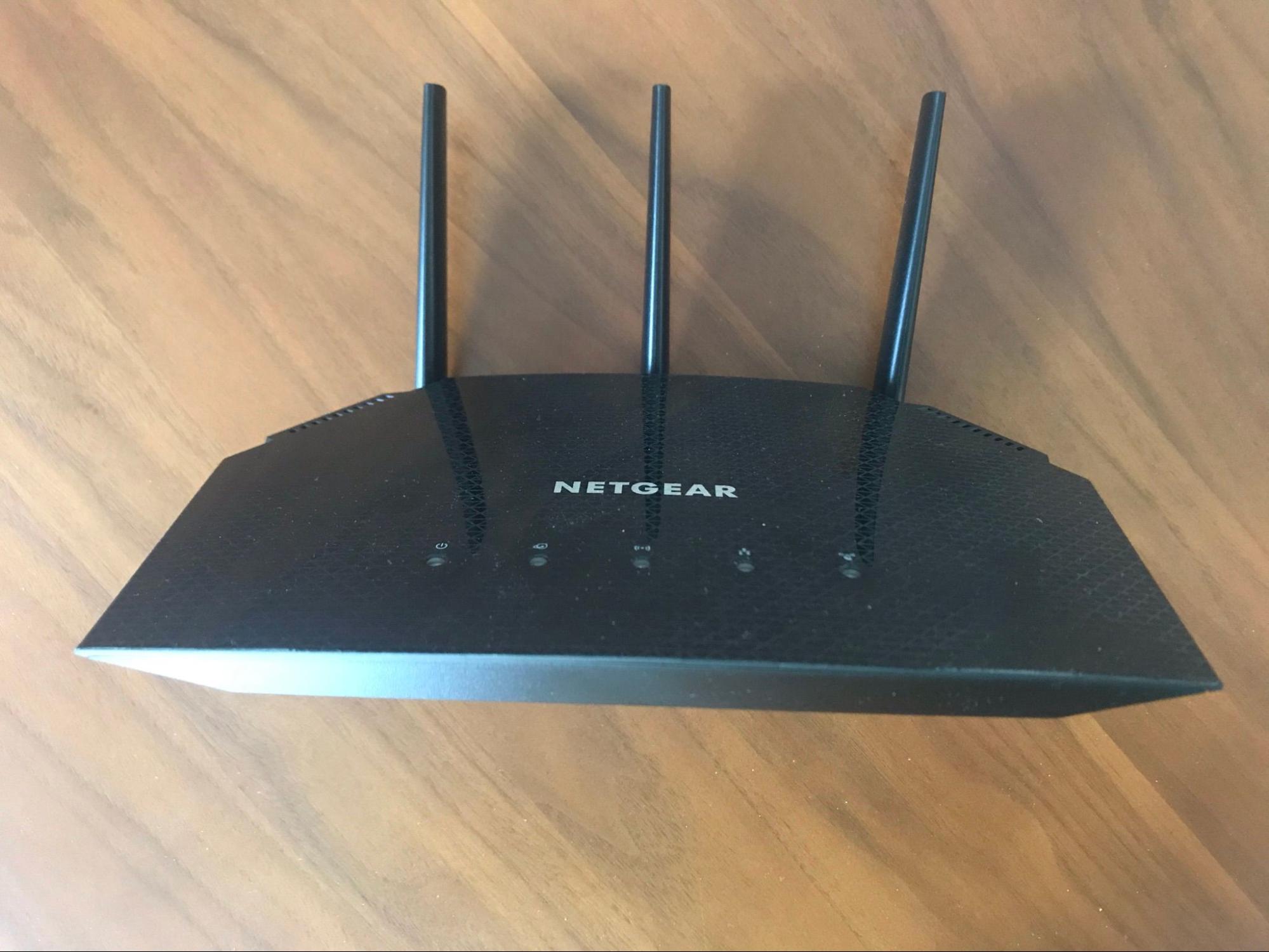Tom's Hardware Verdict
If your devices are compatible with the 5-GHz band, then the Netgear R6700AXS is a solid and predictable budget option—especially for families in need of traffic metering and parental controls.
Pros
- +
Good value for the price
- +
Consistently low latency
- +
Few wild swings in performance
- +
Traffic/use metering and controls
- +
Lots of access-control options available free
Cons
- -
Low 2.4 GHz throughputs
- -
Advanced security and parental controls require subscription
- -
No setup via QR code
Why you can trust Tom's Hardware
Routers aren’t just for gamers and power users. The tech hoi polloi need them too. Moreover, their needs may not be less than those of the putative tech elite—but they may be different. And, because they are less technically inclined, they’re going to want to know what they are getting—and know that it works.
Whatever your needs, we’ve written before that a router using the WiFi 6 standard appears to be the optimal way to go for those seeking an affordable everyday option. Offering theoretical maximum throughputs of 9.6 Mbps, it represents more substantially speed than that from older standards—while eschewing the luxury and added cost of the newer WiFi 6E and WiFi 7 protocols.
Earlier this year, Netgear announced its WiFi 7 router—the Nighthawk RS700—at a $700 price tag. But for those who don’t need anywhere close to the latest and greatest, Netgear’s R6700AXS represents a still-modern yet affordable choice.
Usually available for less than $80, the Netgear R6700AXS AX3200 provides solid value, consistent performance, and a variety of access controls—even if the setup process and the 2.4-GHz band leave something to be desired.
Design of Netgear R6700AXS
For its size, the virtually all-black Netgear R6700AXS is on the heavier side—coming in at 1.1 pounds. for dimensions of 9.27 x 7.26 x 2.25 inches. The front is smaller than the back insofar as the top the router slopes downward.
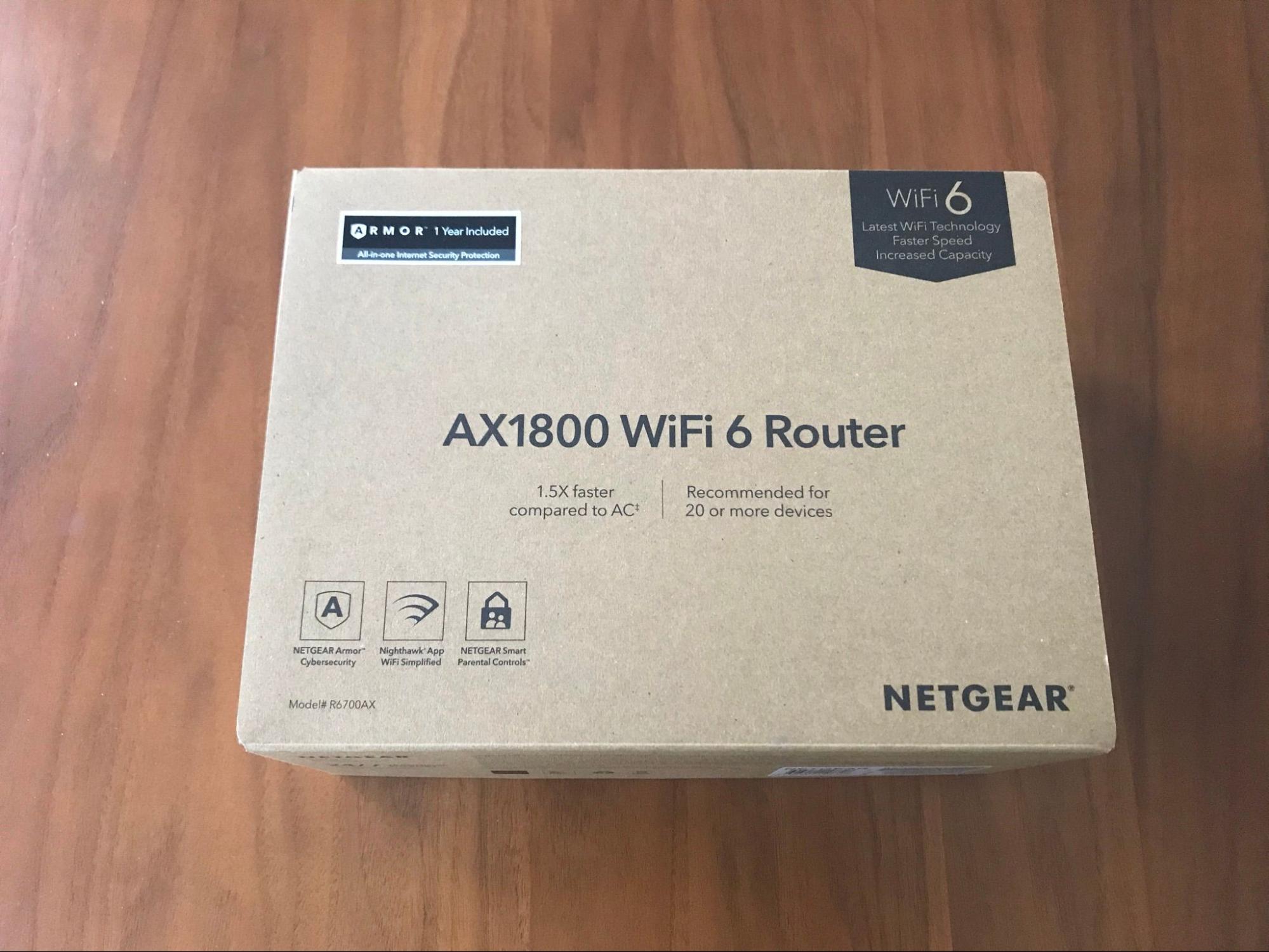
The sloping effect (as opposed to mere angles) is attractive, but the top part of the chassis feels thinner and more cheaply plasticky than the rest of the router. Ditto for the three foldable antennas in the back above the ports. The tactile effect is to emphasize the router’s relative heft. The visual effect is one of futurism on a budget.
While we’re on the subject of lower-cost design, the box is worth mentioning. For those who prefer simplified packaging, as well as for those who prefer to buy with the environment in mind, the Netgear R6700AXS’s packaging is a plus.

Most routers—as a testament to 21st-century consumerism—are packaged in glossy, toxically over-inked boxes screaming with various optimized lab-induced numbers in large bold print. Not so with the Netgear R6700AXS.
The box is plain brown recycled cardboard, as is the inside egg-cartonesque packaging used to secure the router in place. The printing is done in plain black ink in tasteful, understated fonts. To wit, the Netgear R6700AXS’s is the kind of no-nonsense, environmentally responsible box one might be proud to put in last week’s paper bag from Whole Foods with the rest of their recycling.
Setting aesthetics and sustainability aside, the outward design of the Netgear R6700AXS is relatively basic. The back of it features a WPS button, a WAN port (highlighted in yellow to stand out from the surrounding blackness), four Ethernet ports, and a recessed reset button. Sadly, there is no clicky power button on the Netgear R6700AXS; plugged in means on and unplugged means off.
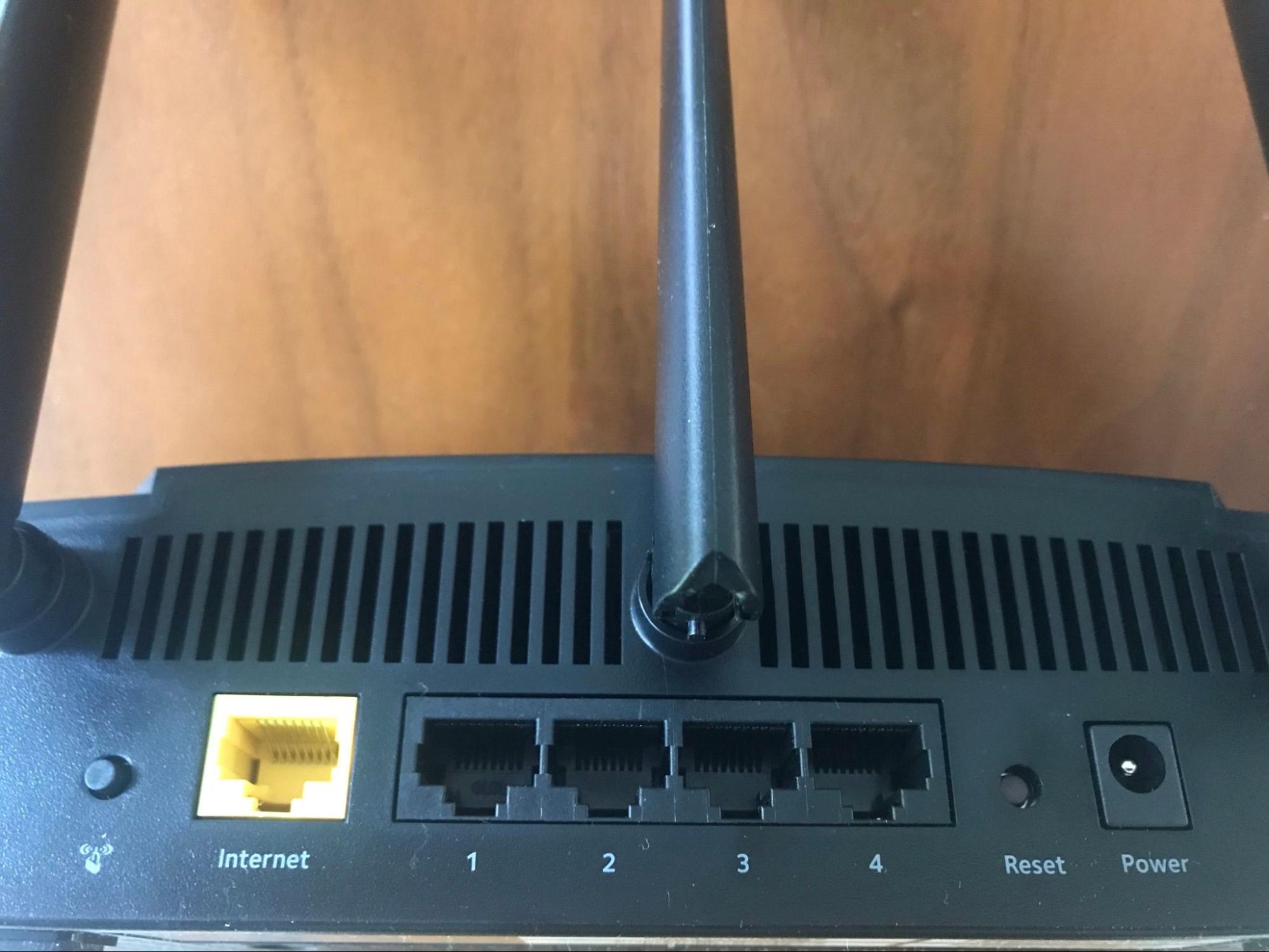
One nice thing about the recessed reset button is that—unlike many other recessed reset buttons—it is not as narrow as a pinhole. Rather, the recess is of a diameter much more forgiving than is typical. Accordingly, if you haven’t seen your paper clips since you set them down next to your fax machine in 2004, then a pen, a pencil, or any number of other household items will do the trick.
Specifications of Netgear R6700AXS
| Processor | 1.5 GHz quad-core processor |
| Memory | 256MB Flash, 512M RAM |
| Operating Frequency | 2.4 GHz / 5 GHz |
| Data Rates | 2.4 GHz Up to 600 Mbps; 5 GHz Up to 1,200 Mbps |
| Ports | (4) gigabit Ethernet ports, (1) gigabit WAN port |
| Encryption | Standards-based WiFi security (802.11i, 128-bit AES encryption with PSK) |
| Wi-Fi Technology | OFDMA (Orthogonal Frequency Division Multiple Access), MU-MIMO,Beamforming+, 1024-QAM |
| Dimensions | 9.27" x 7.26" x 2.25" (not counting antennas) |
| Weight | 1.1 lbs |
| Price | $79.99+ |
Setup of Netgear R6700AXS
Like most routers these days, the Netgear R6700AXS provides options for setup via Ethernet, WiFi, or a smartphone app (Nighthawk) from either the App Store or Google Play. Netgear is coy about the setup process via web interface, however. The one-sheet card with setup instructions prominently gives clear instructions on downloading the Nighthawk app—but directions for beginning the web-interface setup process are only found in fine print on the reverse.
Frustratingly, if you choose not to use the app, Netgear will pester you about it during the setup process. After all, user data presents quite possibly a more profitable product line than do routers. (And this is to say nothing of the paid-subscription features offered through the app; more on those later.)
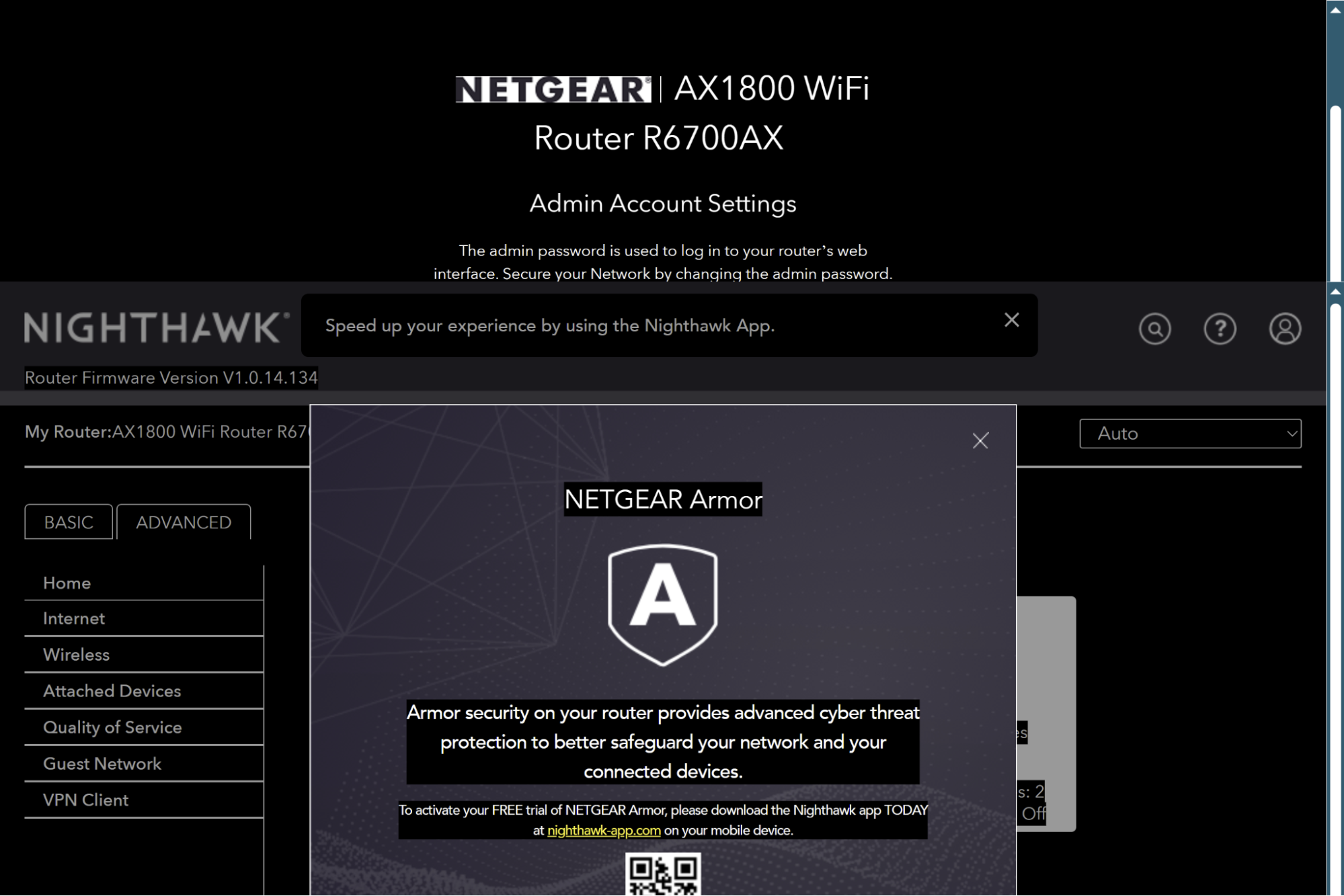
In this vein, during the Netgear R6700AXS setup process, Netgear also interrupts you with a large popup urging you to register your product.
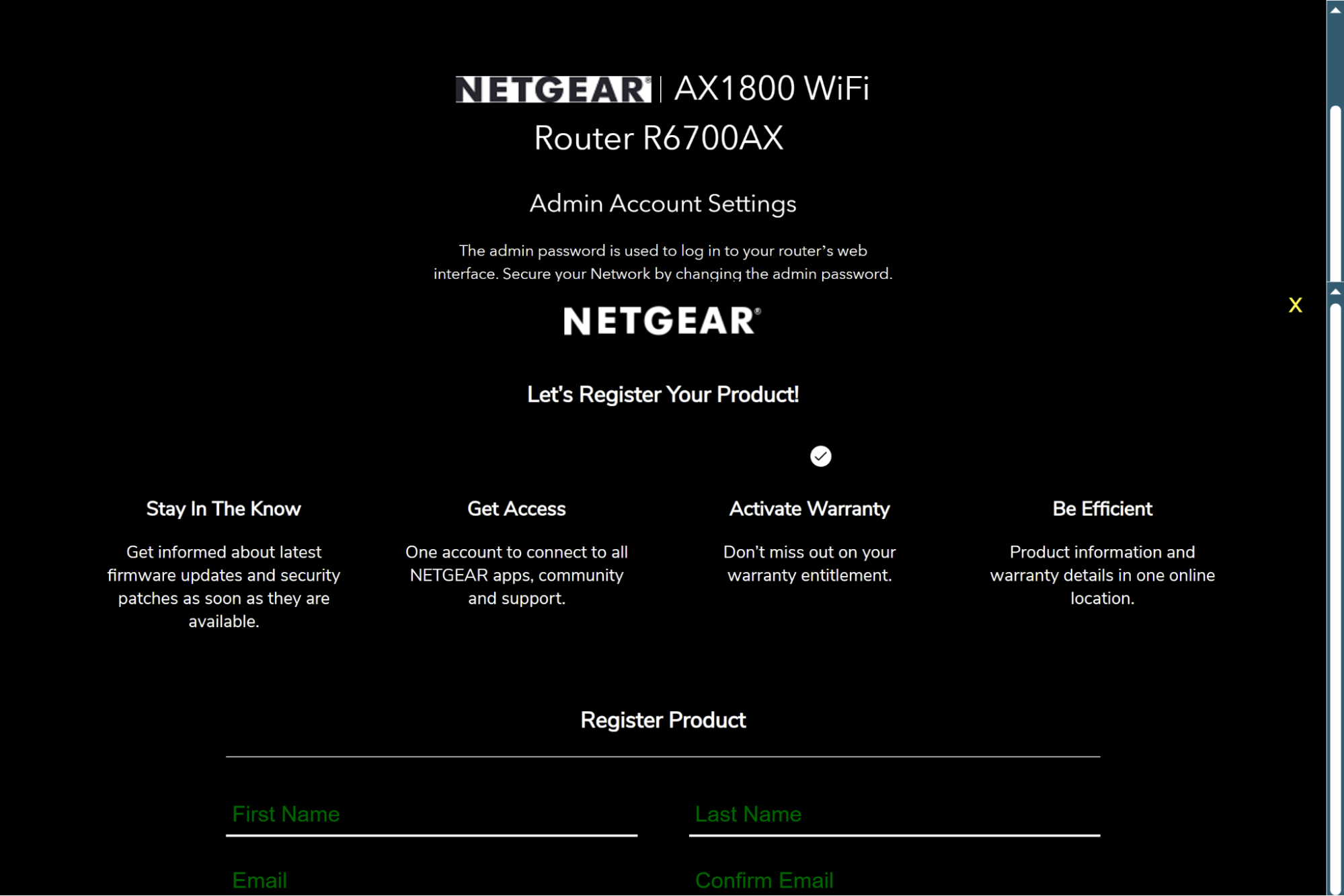
These annoyances aside, the setup process is fairly smooth. There is one additional superficially annoying hitch, however. When prompting the user to set the password for the router admin account, the setup program shoots itself in the foot security-wise by compelling the user to select two pre-scripted security questions—the kind that are often easily socially engineered. If you want ease of access, answer honestly; if you want better security, however, invent a phony answer (if not mash on the keyboard).

In any case, the setup process is relatively quick and straightforward—even if it could be made quicker and more straightforward without the upselling and interruptions.
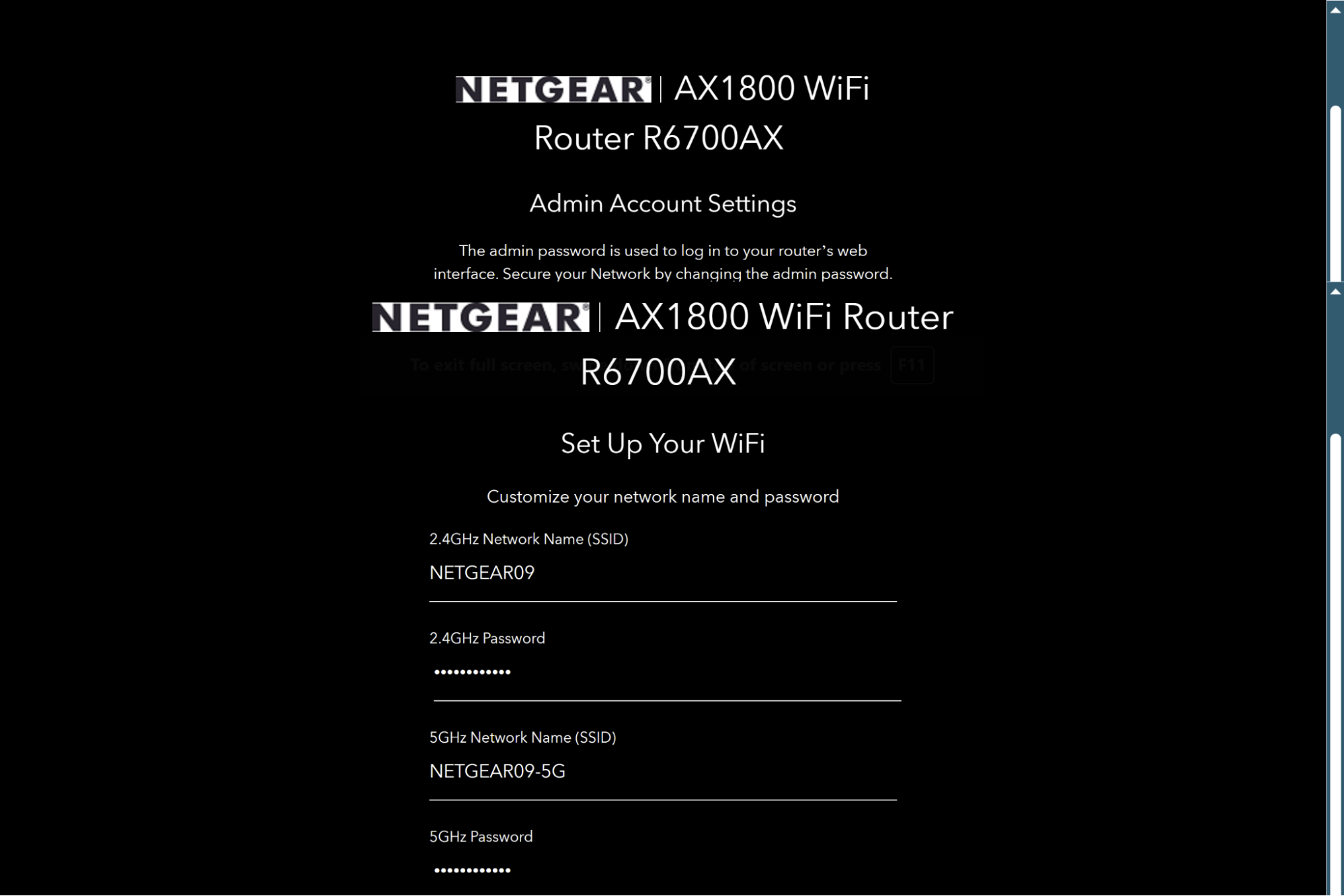
For those who do prefer setup via smartphone over web interface, Netgear seems to have missed an accessibility opportunity in that there appears to be no setup via QR code. From a security standpoint, however, that may be for the best.
Features of Netgear R6700AXS
The Netgear R6700AXS includes many standard features—including guest-network setup on either band, port forwarding, port triggering, QoS prioritization, and VPN setup.
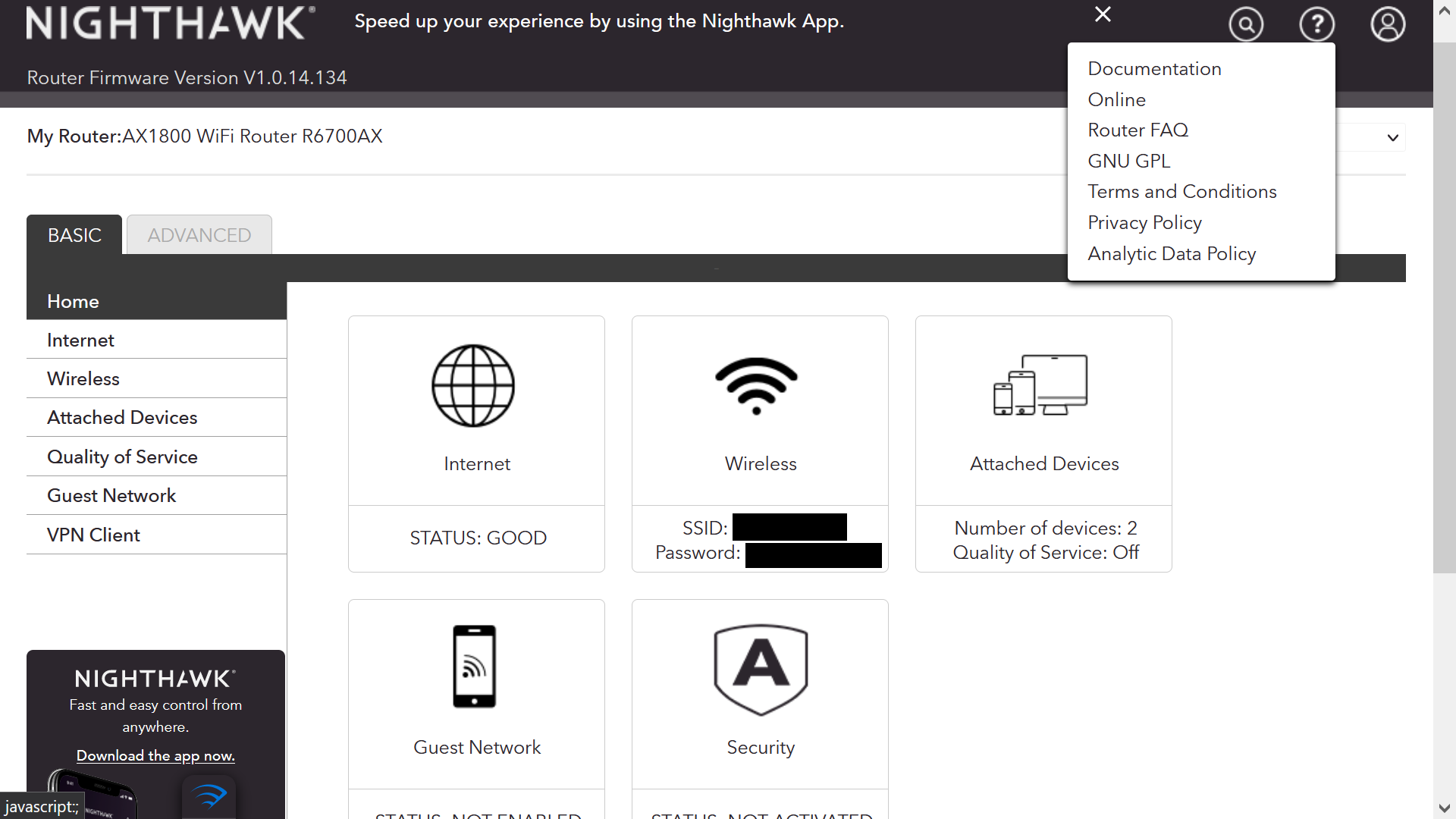
Unfortunately, many other features that might be considered standard or near-standard are only available via the app with a subscription—albeit with a free trial period. This includes security (“Netgear Armor Cybersecurity”), smart parental controls, and 24/7 support. This is disappointing when compared with other routers; even the similarly (if not lower) priced Asus RT-AX1800S doesn’t require a subscription for these features.
In fairness, however, the Netgear R6700AXS does offer some light security and parental-control features for free—and its free parental controls appear to be more substantial than those of the Asus RT-AX1800S.
Technically, the free parental controls are featured under the Security tab in the control panel. But they are richer than you might expect—offering domain blocking, service blocking, keyword blocking, and device blocking/access control. You can also set an automated schedule for when you want to block these things.
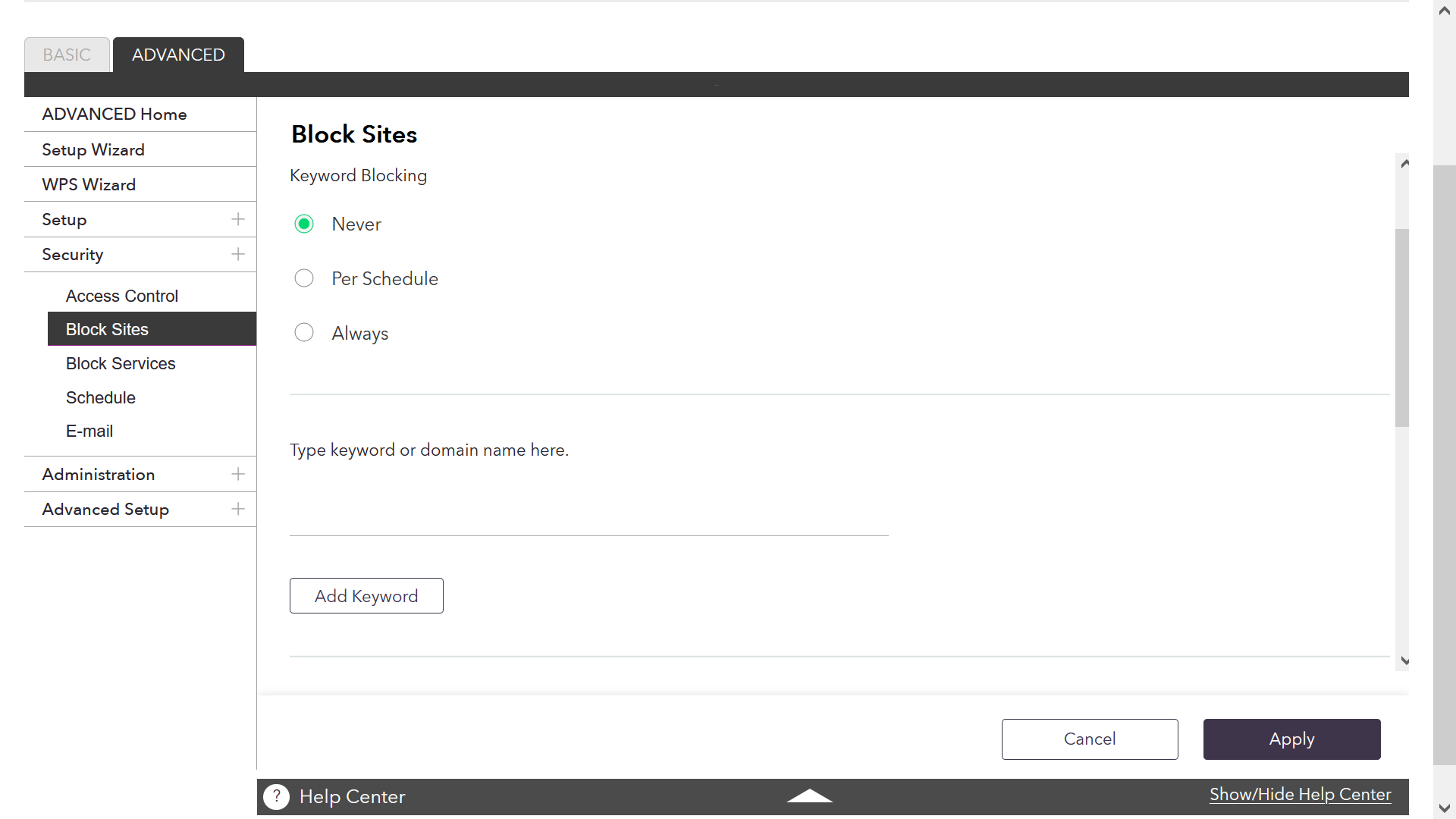
Finally, you can have the router email logs to and alerts—including when someone attempts to visit a blocked website.
To speak of monitoring and controlling, the Netgear R6700AXS offers a traffic-meter and traffic-control feature. The traffic meter can be set to monitor downloads only or for both directions. You can set a monthly limit on either the amount of traffic per megabyte or by the number of hours of use.
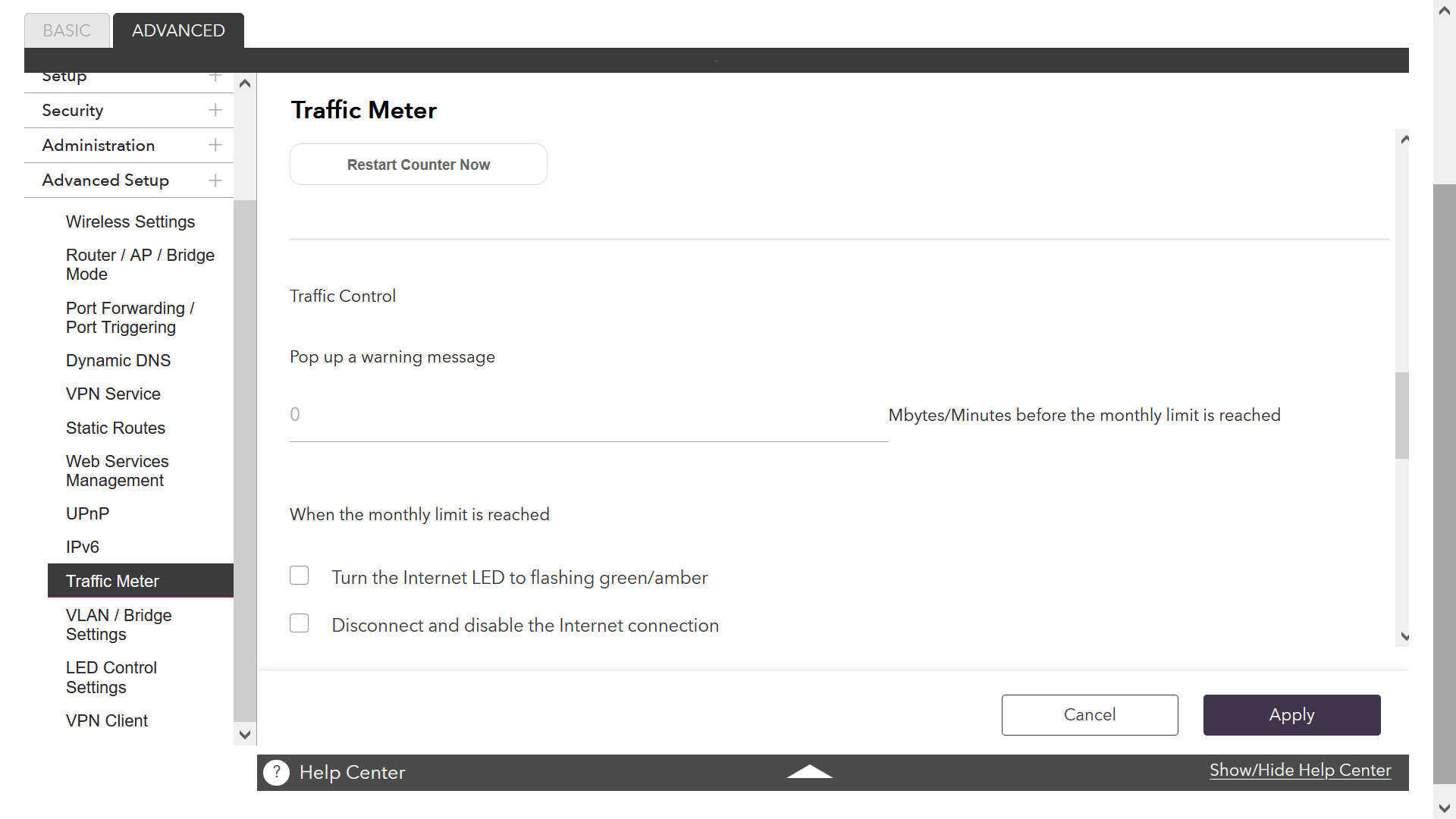
When the monthly limit is in danger of being reached (you can set how long before the monthly limit, in terms of either megabytes or minutes, as appropriate), a warning message will pop up for users.
When the monthly limit actually is reached, either or both simultaneously of a couple of options are available. You can set a visual alert on the router, turning the Internet LED light on the front of the router to flash green and amber. Additionally or alternatively, you can set the router to automatically disconnect and disable the internet connection for the remainder of the month.
Traffic metering is not the only area in which you can tinker with the LED settings. For those who grow weary of bright LEDs that exist merely to confirm that their router is supposedly working, the Netgear R6700AXS offers the option under advanced settings to enable/disable blinking LEDs—and even an option to turn all LEDs off altogether (excepting the Power LED).
An additional nice touch that the Netgear R6700AXS offers is its ability to backup router settings to a file that can be loaded and reverted to later.
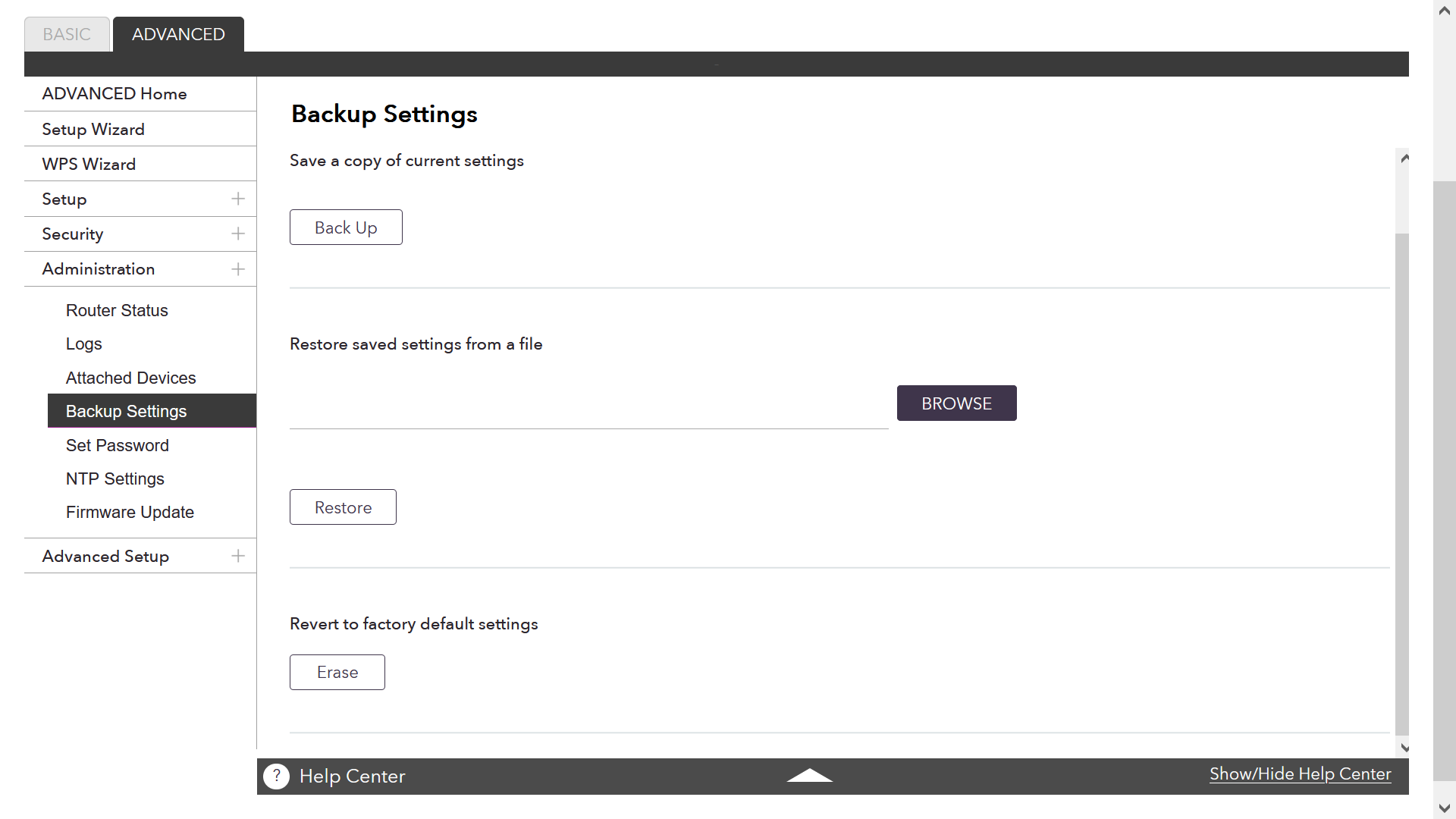
Performance of Netgear R6700AXS
Before we get to our tests, it’s worth pointing out that the Netgear R6700AXS’s control panel offers its own throughput testing via Speedtest. When we tried this on our close-to-the-router client with no network congestion, we got a download-throughput result of 918.42 Mbps. Outstanding.
At the same time, we’ll continue to rely on our own testing methodology.
We conducted tests repeatedly throughout the course of three weekdays in a single-family house with a 1,200-Mbps connection, using a laptop with an Intel WiFi 6 AX201 160MHz network adapter as the client and another PC, attached via Ethernet, as the server to receive traffic. We used iPerf, a common bandwidth benchmarking tool, to test throughput and ping to test latency. Four sets of tests were conducted for each band:
Near uncongested: Testing laptop approximately 7 feet away from the router, no substantial traffic being carried across other devices
Far uncongested: Testing laptop approximately 25 feet away from the router, no substantial traffic being carried across other devices
Near congested: Testing laptop approximately 7 feet away from the router; videos streaming on four devices throughout the house
Far congested: Testing laptop approximately 25 feet away from the router; videos streaming on four devices throughout the house
The Netgear R6700AXS claims to reach speeds up to 600 Mbps on the 2.4 GHz band and up to 1,200 Mbps on the 5 GHz band. However, those are theoretical numbers and iPerf numbers are much lower on every router.
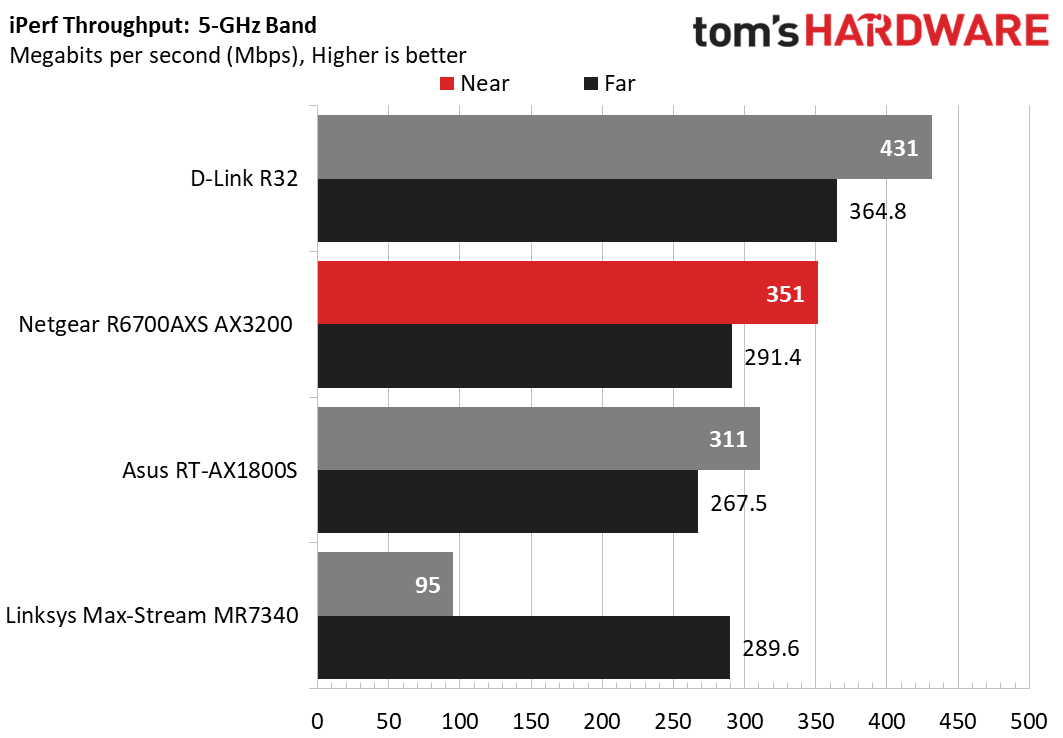
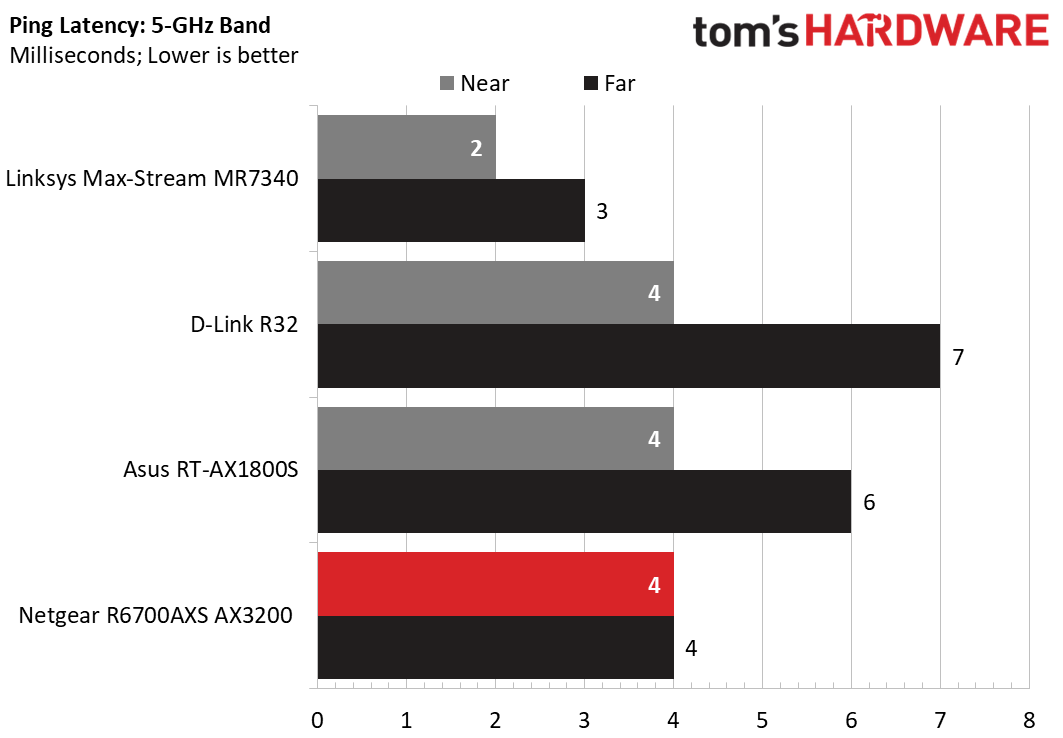
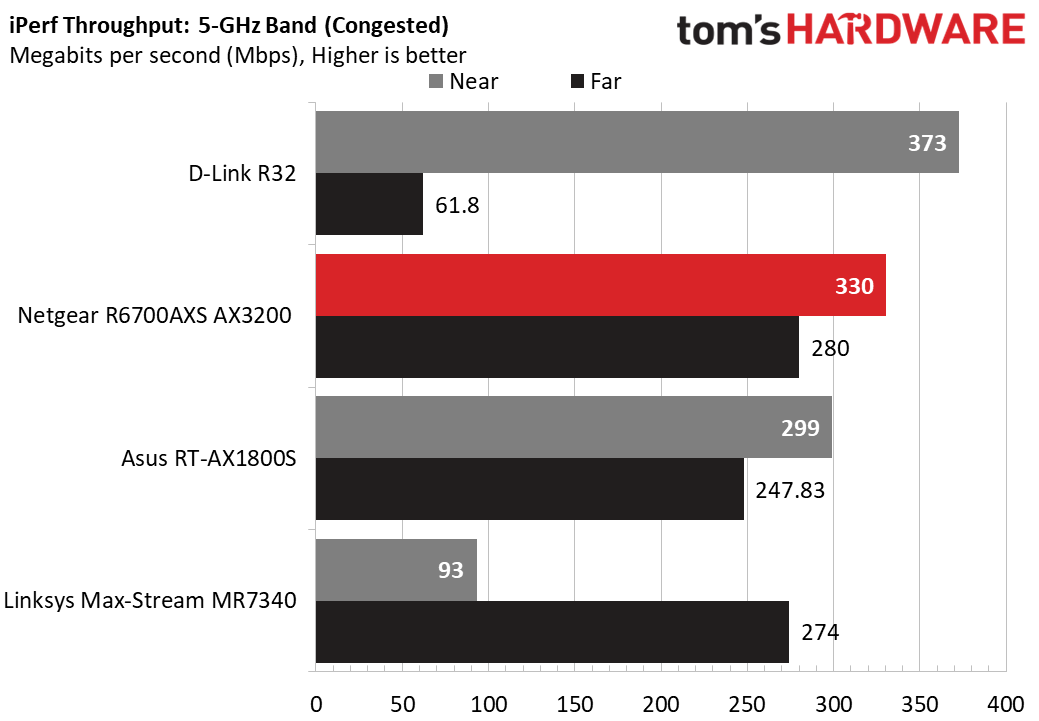
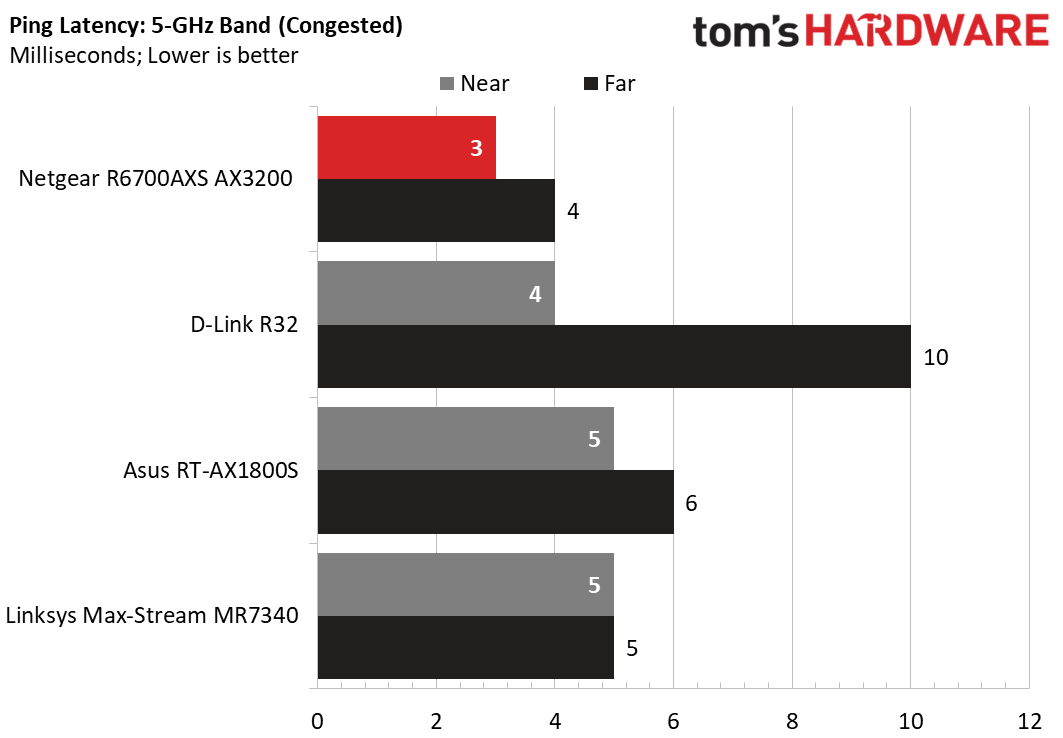
At 5-GHz, the higher speed band that you will want to use for any devices that require good bandwidth (PCs, streaming devices), the R6700AXS provides really strong near and far throughput both with and without network congestion. Though the D-Link R32 is a tad faster in most scenarios, Netgear’s router fares better at a distance when there’s other traffic. It also has latency that is a very solid 4 ms in all scenarios.
It is also noteworthy that, overall, there was little variability in latency throughout all tests on the 5 GHz band; in other words, there were no notable outliers skewing the mean averages when testing latency in 5 GHz.
We also noted very few wild swings in general on throughput across both bands. For better or worse, overall performance on the Netgear R6700AXS appears relatively consistent.
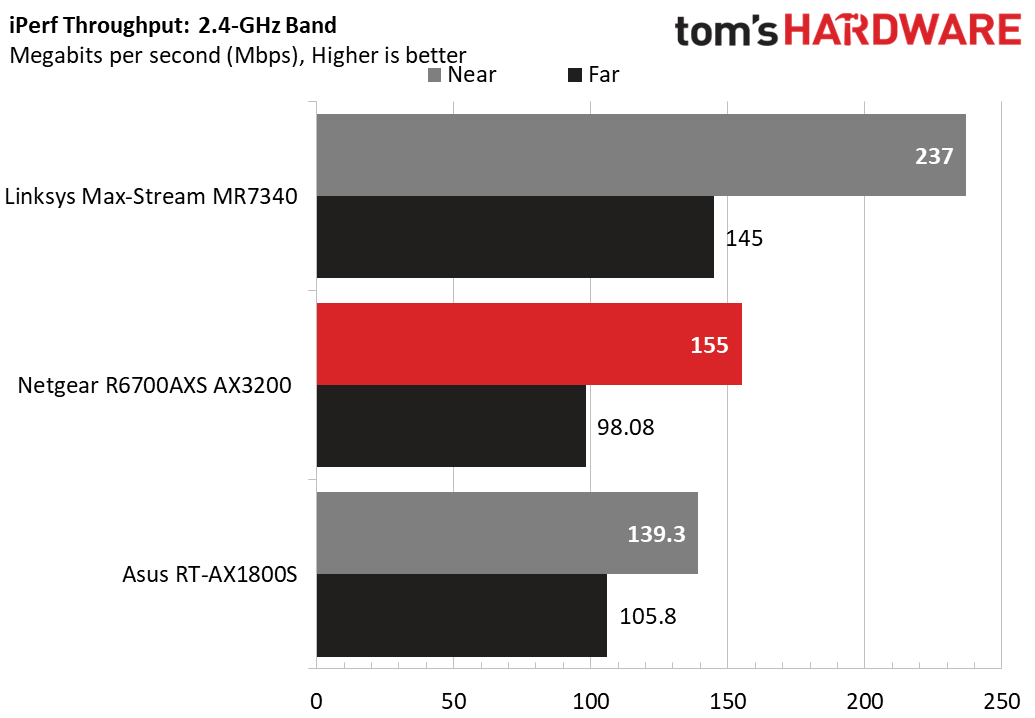
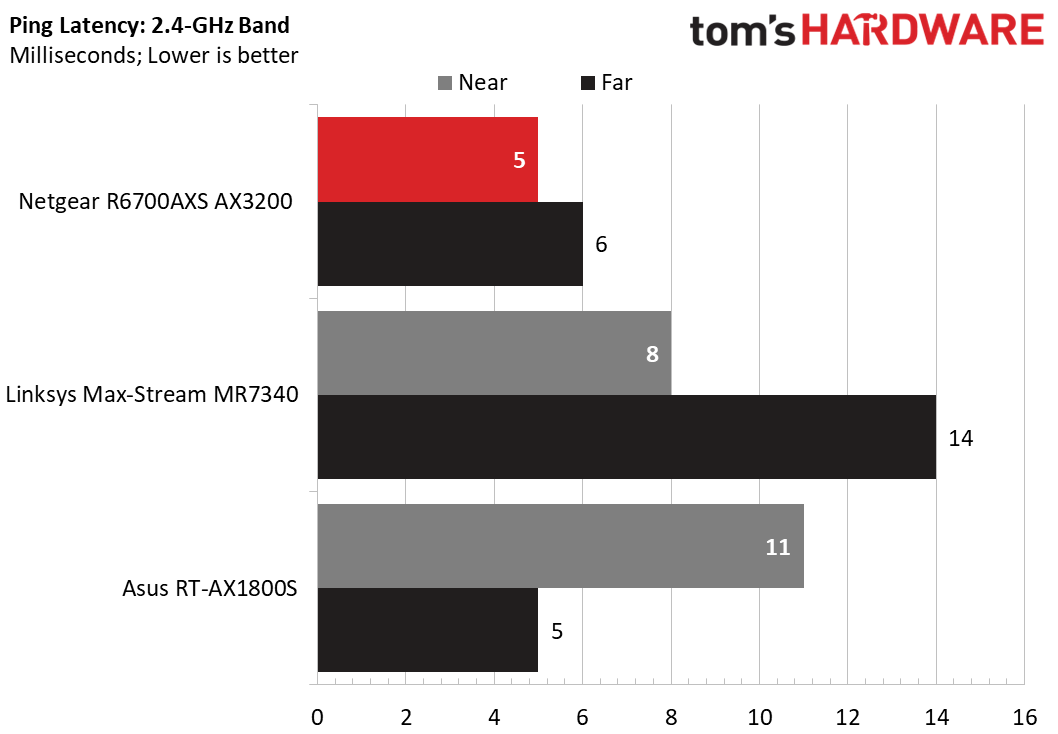
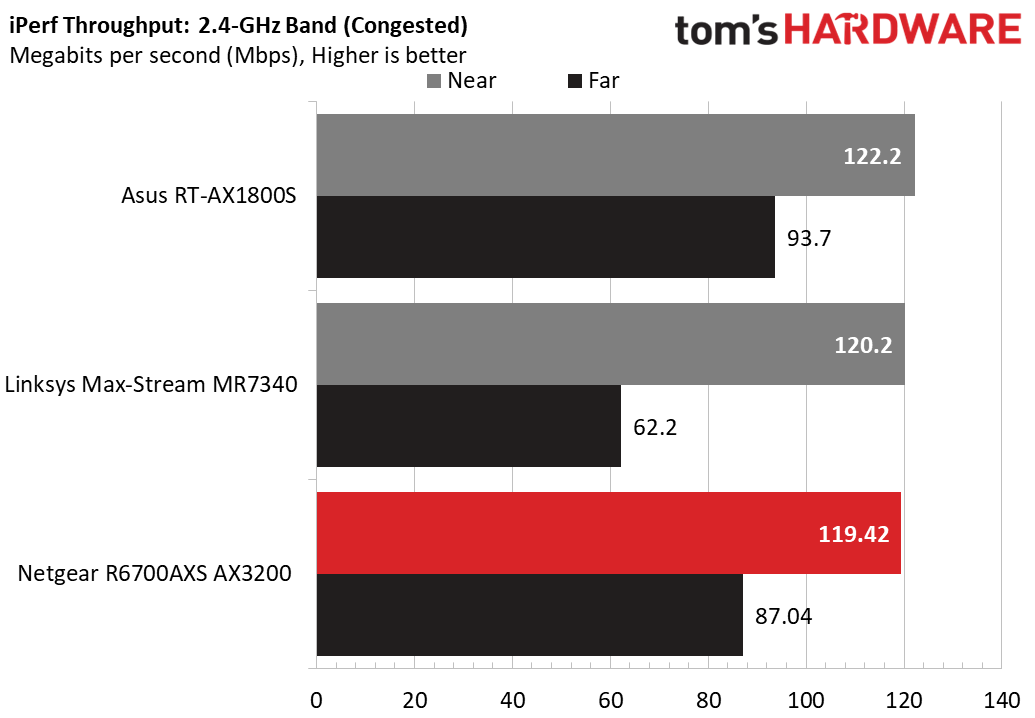
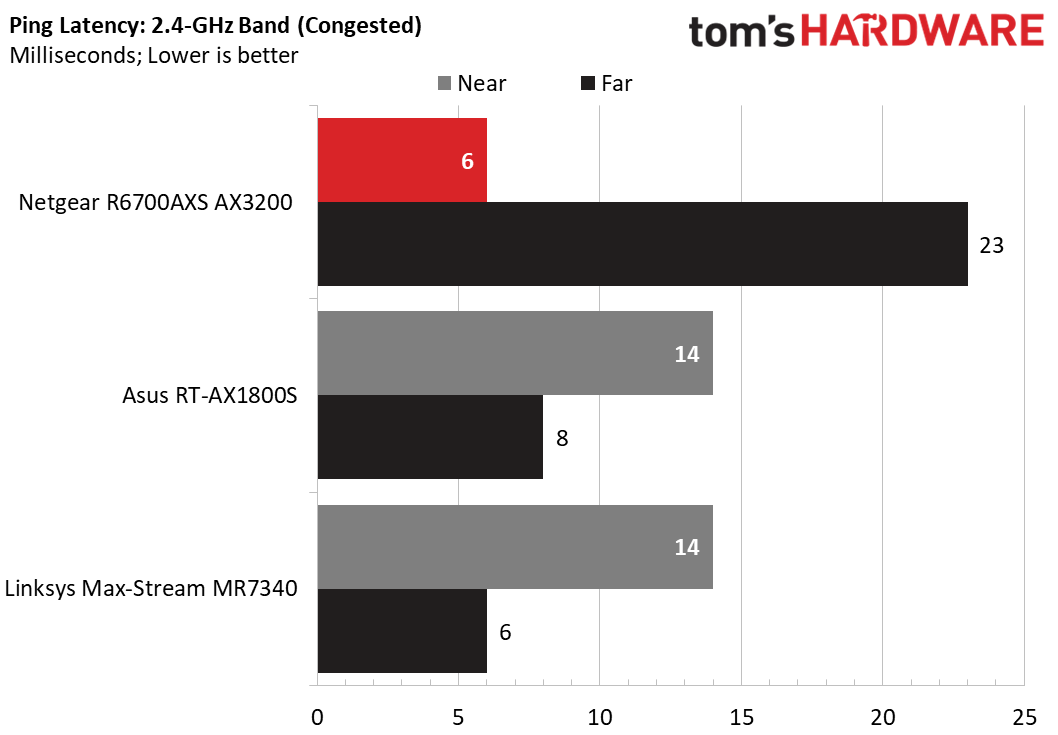
At 2.4 GHz, the throughput was so-so, particularly when we had congestion and were far from the router. The latency was particularly mediocre at far distances with congestion. However, for your older and non-bandwidth-critical devices, the Netgear R6700AXS’s 2.4-GHz performance is more than adequate.
Bottom Line
Considering its lower price, the Netgear R6700AXS AX3200 router has a ton to offer. Its overall consistency—particularly on the 5 Ghz band—is remarkable. Far-congested tests saw some heightened variability, but performance across all other tests on the 5 GHz band was very steady. You know what you are getting with the Netgear R6700AXS.
We are disappointed that security features, support, and smart parental controls, inter alia are subscription only. Even without any subscriptions, however, users can do a lot with the access controls that are offered for free—especially when paired with the traffic metering. In this regard, the Netgear R6700AXS seems especially well suited to a small family on a budget—assuming there are no demanding gamers in the house.
